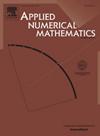有三个缺失观测点的中心复合设计
IF 2.2
2区 数学
Q1 MATHEMATICS, APPLIED
引用次数: 0
摘要
在实验中,由于一些意外事故或高成本实验,有很多情况下会遗漏、忽略或无法获得某些观测数据。观测数据的缺失会使响应面模型的结果产生误导。因此,这项工作研究了不同设计点(因子点、轴向点和中心点)的三个观测点缺失对中心复合设计(CCD)的估计和预测能力的影响。因此,最小损失 CCD 是在最小损失准则下制定的。本文认为最小损失 CCD 对三个缺失观测点具有鲁棒性,并对其进行了研究。本文以闭合形式给出了缺失三个观测点时设计效率的一般公式,作为 α 的函数,其中 α 是 CCD 轴向部分使用的值。本文首次明确计算了从 k=2 到 k=7 因子的 CCD 的效率,并以表格形式显示,供从业人员使用。本文还给出了相应的效率图表,并对 α 值提出了建议,以最大限度地提高所有情况下设计的稳健性和可估算性。本文章由计算机程序翻译,如有差异,请以英文原文为准。
Central composite designs with three missing observations
In an experiment, there are many situations when some observations are missed, ignored or unavailable due to some accidents or high cost experiments. A missing observation can make the results of a response surface model quite misleading. This work therefore investigates the impact of a three missing observation of them various design points: factorial, axial and center points, on the estimation and predictive capability of the central composite design (CCD). Therefore minimaxloss CCD is formulated under a minimaxloss criterion. The minimaxloss CCD is considered to be robust to three missing observation and the investigation has been made in this article. The general formulas for the efficiency of the design when missing three observations, are presented in closed form as a function of α, where α is the value used in the CCDs' axial part. For the first time in this paper, these are calculated explicitly for CCDs from to factors and displayed in tables for practitioners to use. The corresponding graphs for the efficiencies are presented and suggestions are made for the values of α to maximize the robustness and estimability of the design for all cases.
求助全文
通过发布文献求助,成功后即可免费获取论文全文。
去求助
来源期刊

Applied Numerical Mathematics
数学-应用数学
CiteScore
5.60
自引率
7.10%
发文量
225
审稿时长
7.2 months
期刊介绍:
The purpose of the journal is to provide a forum for the publication of high quality research and tutorial papers in computational mathematics. In addition to the traditional issues and problems in numerical analysis, the journal also publishes papers describing relevant applications in such fields as physics, fluid dynamics, engineering and other branches of applied science with a computational mathematics component. The journal strives to be flexible in the type of papers it publishes and their format. Equally desirable are:
(i) Full papers, which should be complete and relatively self-contained original contributions with an introduction that can be understood by the broad computational mathematics community. Both rigorous and heuristic styles are acceptable. Of particular interest are papers about new areas of research, in which other than strictly mathematical arguments may be important in establishing a basis for further developments.
(ii) Tutorial review papers, covering some of the important issues in Numerical Mathematics, Scientific Computing and their Applications. The journal will occasionally publish contributions which are larger than the usual format for regular papers.
(iii) Short notes, which present specific new results and techniques in a brief communication.
 求助内容:
求助内容: 应助结果提醒方式:
应助结果提醒方式:


